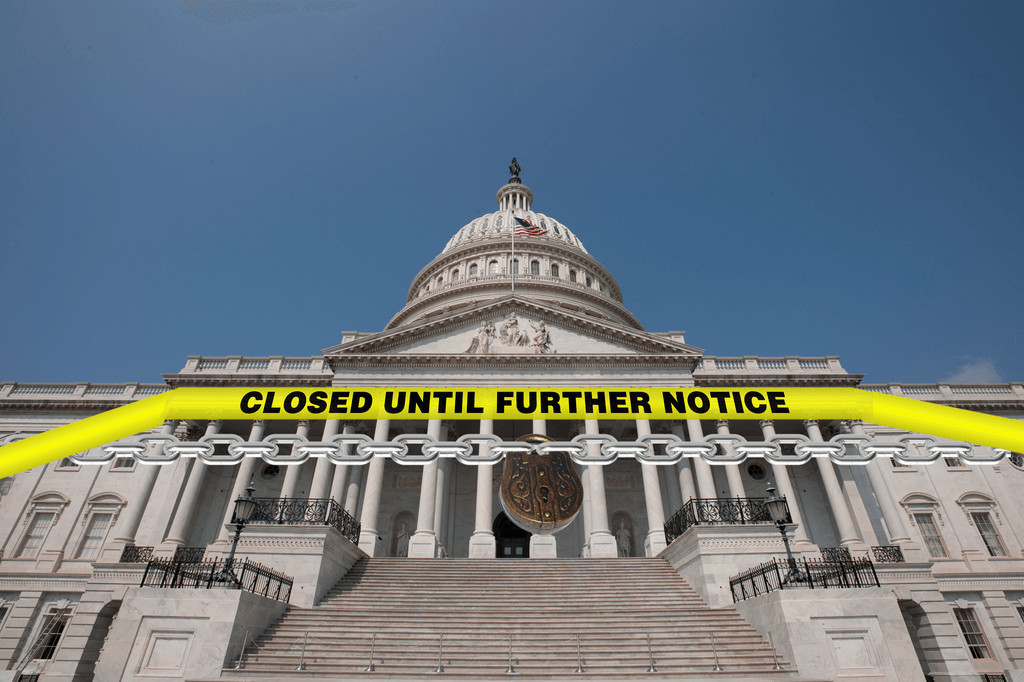Image (for representational purpose) Courtesy: Kaz Vorpal, CC BY 2.0, via Wikimedia Commons
Second Day of U.S. Government Shutdown: No Immediate Resolution in Sight; Political Standoff Deepens, Impacts Widen
WASHINGTON, D.C. – October 2, 2025 – Second Day of U.S. Government Shutdown: No Immediate Resolution in Sight. As the political impasse in Washington shows no immediate signs of ending, both the executive and legislative branches remain locked in a funding impasse. This has caused many federal agencies to halt operations, while essential services continue in a limited capacity. This prolonged gridlock is raising significant concerns about its widening impact on federal workers and the broader economy.
Political Deadlock and Key Issues
The stalemate centers on sharp disagreements between the Trump administration and congressional Democrats. These include federal spending levels, foreign aid rescissions, and the critical extension of Affordable Care Act (ACA) premium tax credits. President Donald Trump has notably escalated tensions, using his Truth Social platform to announce plans with budget director Russ Vought. Their aim is to identify “Democrat Agencies” for “temporary or permanent” spending cuts. White House press secretary Karoline Leavitt further stated that mass firings of federal workers are “imminent” and “likely going to be in the thousands,” a significant departure from the usual practice of temporary furloughs during past shutdowns. This aggressive stance highlights the severe nature of the current impasse, which sees no immediate resolution in sight.
Senate Democratic leader Chuck Schumer and House counterpart Hakeem Jeffries have dismissed these layoff threats, questioning their legality. They accuse Republicans of shutting down vital services for “partisan, political purposes.” Senate votes planned for Thursday were cancelled for the Yom Kippur holiday, with the next legislative action expected on Friday. Republicans are seeking support for a seven-week stopgap bill, which Democrats in the Senate are blocking, demanding extensions on health-related funding. The lack of movement confirms that the Second Day of U.S. Government Shutdown continues with entrenched positions on both sides.
Impact on Federal Workforce and the Economy
The ongoing shutdown has led to significant disruptions for the federal workforce. An estimated 750,000 federal employees are expected to be sent home without pay across various agencies. Another 700,000 essential personnel continue to work without immediate compensation. These workers face mounting financial uncertainty as the shutdown extends beyond its initial day.
Economically, the shutdown is proving costly. The Congressional Budget Office (CBO) estimates that the federal government will pay $400 million a day for furloughed employees who are not working. Furthermore, according to an estimate by EY-Parthenon chief economist Gregory Daco, each week of the shutdown could cost the economy $7 billion and reduce GDP growth by 0.1 percentage points. The last shutdown in 2018-2019 reportedly cost the U.S. economy about $11 billion, according to the CBO. These figures highlight the significant financial burden, not just on individual workers but on the national economy, reinforcing the urgency of a resolution. A major concern for policymakers and investors is also the potential delay in releasing crucial economic data, such as the September labor report and consumer price index. Such delays hinder accurate economic assessment and could further complicate market responses.
Outlook and Ongoing Negotiations
While unconfirmed reports hint at informal talks between rank-and-file lawmakers, there is no clear path to an immediate agreement as of this writing. Both parties remain deeply divided: Republicans are aiming for long-term budget cuts, while Democrats insist that key health and social programs be funded before negotiations can move forward. The threat of mass layoffs, combined with reported funding freezes for projects primarily in “blue states” (including $18 billion for infrastructure in New York City and $8 billion in green energy projects), signals a more aggressive approach to this shutdown. This makes the Second Day of U.S. Government Shutdown particularly fraught with uncertainty.
Economic analysts warn, according to preliminary statements, that the longer the government remains shuttered, the greater the risk to economic stability and essential services. While some project that most disruptions will be temporary if funding is restored by early next week, the political will for a swift resolution remains uncertain. The continued impasse could lead to deeper economic consequences, extending beyond the immediate impact on federal workers who will begin missing paychecks deeper into October. The looming question remains: when will the stalemate end, and what will be the long-term ramifications of this prolonged federal paralysis?
This content is intended for informational purposes only and is not financial advice.

